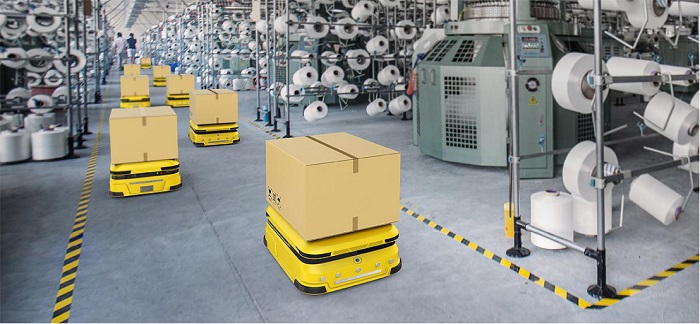The development situation of the global textile industry
The clothing industry occupies an important position in the global economy, accounting for about 2% of the global GDP. According to Frost&Sullivan statistics, in 2018, the total retail sales of the global apparel retail industry reached US$1.4382 billion, with a compound annual growth rate of 4.2% from 2014 to 2018.
In 2018, the global export trade scale of textiles (SITC 65) and clothing (SITC 84) reached 315 billion U.S. dollars and 505 billion U.S. dollars, an increase of 6.4% and 11.1% year-on-year.
1.Global textile export analysis:
China, the European Union, and India are still the main exporters
In 2018, China, the European Union (28 countries) and India were still the top three textile exports in the world. The textile export trade volume was 118.5 billion U.S. dollars, 74 billion U.S. dollars and 18.1 billion U.S. dollars, accounting for 66.9% of the global textile export market. New high since 2011.
Among them, China and the European Union's textile exports have grown rapidly. In 2018, textile exports increased by 7.9% and 6.9% respectively, both higher than the global average growth rate.
The United States remains the fourth largest exporter of textiles, accounting for 4.4% of the global market share, down from 4.6% in 2017.

2. Global textile import analysis: the import market is becoming increasingly diversified
In 2018, the European Union (28 countries), the United States and China were still the top three importing countries, accounting for 37.5% of the total global textile imports, compared with 37.7% in the previous year and much lower than the 52.4% in 2000. It shows that with the transformation of the world's clothing production and export patterns, the textile import market is becoming increasingly diversified.
In 2020, the new crown pneumonia epidemic invaded the world, and most regions stopped production and business. However, China was the first to emerge from the epidemic and resume work at the earliest. A large number of textile orders entered China, which indirectly stimulated the development of China's textile industry and established China's position in the global textile industry.
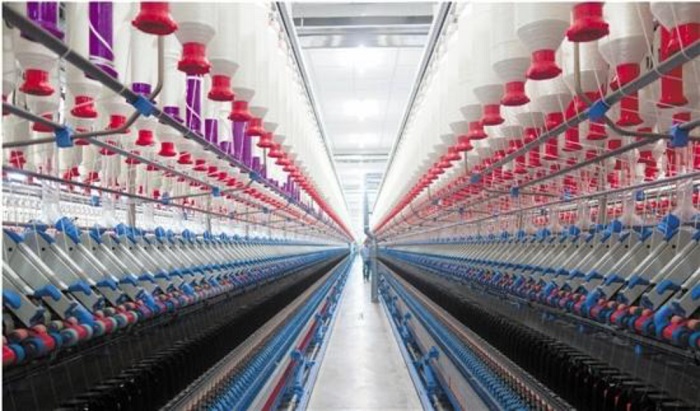
Intelligent transformation of the textile industry is imperative
The global textile industry is facing practical problems such as the disappearance of the demographic dividend, rising raw material prices, increasing environmental pressures, and shrinking exports. In the face of development difficulties, the textile industry is actively seeking change, speeding up the conversion of new and old kinetic energy, and using intelligent manufacturing as a means to promote the textile industry to high-end development.
The Chinese textile industry is committed to the transformation and development from "big" to "big and strong", seeking to achieve breakthroughs in some areas and lead the world. Leveraging on "Made in China 2025" and "Internet +", it has become a general trend to accelerate the innovative development of a new generation of information technology and the integration of the textile industry. Combined with continuous technological innovation, promote the textile industry to green, low-carbon, digital, intelligent and flexible Development in the same direction is the only way to achieve this great change.
The textile industry needs to achieve efficiency improvements from production to logistics and warehousing, and textile machinery is a breakthrough to help the development of the textile industry. Intelligent textile production machinery and logistics warehousing equipment are undergoing technological innovation. With 50 years of technical precipitation and design experience, Suntech is committed to the intelligent research of textile machinery. It develops and produces intelligent textile inspection machines, cloth inspection packaging lines, axle warehouses, AGVs and other intelligent textiles. Machinery, world-renowned, with a burst of reputation, helps the textile industry to flourish.(try Suntech AGV)
.jpg)
What is AGV?
The full name of AGV is Automated Guided Vehicle. At present, the most common applications are: AGV handling robot or AGV trolley. The main function is concentrated in automatic logistics transfer. AGV handling robot automatically transports items to designated locations through special landmark navigation. The most common guidance method For magnetic stripe guide, laser guide, RFID guide, etc.
Magnetic stripe guidance is the most commonly used and the lowest cost method, but the site setting has certain limitations and has a certain impact on the decoration style of the venue; the laser guidance cost is the highest, and the requirements for the venue are relatively high; the RFID guidance cost is moderate, and its advantages are The guidance accuracy is high and the site setting is more convenient, which can meet the most complex site layout, and has no impact on the overall decoration environment of the place. Secondly, the high security and stability of RFID is also not available in the magnetic stripe navigation and laser navigation methods.
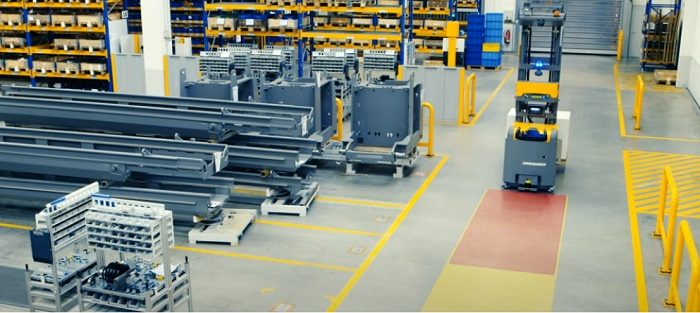
Applications
AGVs are important to operators in a wide range of industries, such as: manufacturing and product assembly, military and defense, aerospace, warehouse, material handling, food and beverage, automotive assembly, plastics and metal and goods packaging. Within these industries, managers use AGVs to improve workflow and lower costs.
Precise programming allows AGVs to carry out specific tasks like: product and pallets loading or unloading, assembling parts, moving materials between conveyor belts, towing equipment, etc. Thanks to the incredible technology that goes into an AGV, all of this can be done without the need for a human to operate the machine.
Material handling AGVs, automatic guided carts and transfer carts are used to replace repetitive manual labor jobs. Over time, these vehicles can significantly reduce labor costs.
Automated guided vehicles are also used in military and defense applications as unmanned vehicles. In facilities with clean rooms, operators may use an AGV so that a human doesn’t need to work in a hazardous environment.
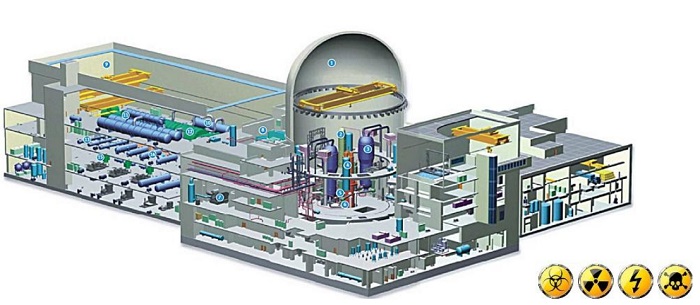
History
Arthur “Mac” Barrett built the first automatic guided vehicle in 1953 by modifying a towing tractor so that it followed an overhead wire. His company, Barrett Electronics Corporation, debuted his driverless vehicle in 1954, calling it the Guide-o-Matic. Essentially, the Guide-o-Matic was a tow truck that automatically followed a wire embedded in the floor.
AGVs and automation soon became popular with warehouses and factories of all kinds. While they were constantly improving them during the rest of the ‘50s and the ‘60s, they didn’t make a significant change again until the ‘70s. In 1973, Volvo developed a new assembly system that used 280 computers controlled AGVs. Their system was more efficient than the conveyor assembly line, and other companies were soon requesting systems for their own facilities. Later that decade, manufacturers developed unit-load vehicles.
In the 1980s, industry leaders coined the name “automatic guided vehicle.” Before then, these machines were simply known as “driverless vehicles.” Also, during the ‘80s, engineers introduced non-wire guidance mechanisms, such as lasers and magnetic tape. Laser guidance specifically was introduced in 1987. In 1989, engineers introduced computer controls.
In 1992, engineers designed the first systems that could guide both wired and wireless AGVs. Most recently, in 2003, engineers developed AGVs that can change path. Today, AGVs are more autonomous than ever, making lifting, lowering and transferring loads safer and easier than ever.
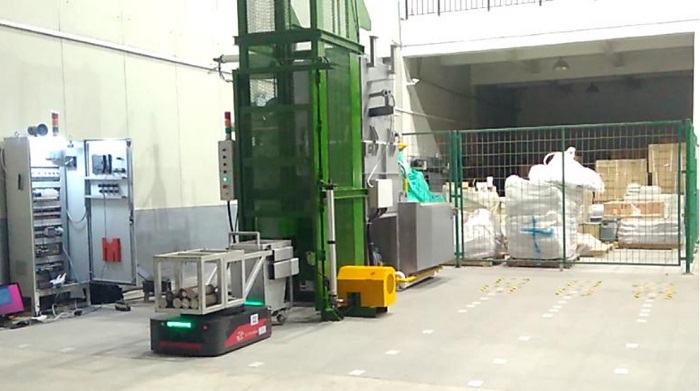
Types
An automatic guided vehicle is directed by a pre-programmed guidance system that varies in complexity based on the function being performed. Some AGVs are guided by lasers, but fixed path and free-range systems are more common. Other less common AGV systems include: camera guided AGVs, optical guided AGVs, forked AGVS, unit load AGVs, inertial guided AGVs, automated guided carts, towing vehicles and outrigger AGVs.
Laser guided AGVs rely on mounted laser scanners to function accurately. The scanners emit a laser onto a target, then reflects it back. Based on the amount of time it takes the reflection to return, the AGV can determine target distance. It orients itself in relation to its distance from the target.
Fixed path systems use an embedded wire, magnetic tape or colored paint as a guide for very simple vehicle routes. The AGV is equipped with sensors and frequencies that respond to the wire or tape and allow it to follow a path. These simple systems can be quite accurate and reliable, although they do not allow for the flexibility that some applications may require.
Free-range systems are a more flexible and adaptive option. A free-range system guides the AGV using a computer-based program that communicates with the onboard microprocessor and control system. This programming translates into controlled and adjustable movement.
Camera guided AGVs use onboard cameras to see their surroundings while performing. These AGVs are most helpful when you require precision navigation through a crowded area or an area short on space.
Optical guided AGVs receive guidance from photosensitive tape that operators adhere to facility floors. To help them know where they are on the track, optical guided AGVs can measure distance between established stop locations using wheel odometers.
Forked AGVs, like forklifts, can pick up and move a wide variety of loads to different levels.Unit load AGVs, also known as large chassis AGVS, transport heavy loads with the assistance of components like roller beds and lift/lower mechanisms.
Inertial guided AGVs rely on magnets mounted under the floor to get their sense of direction. They determine their location and where they need to move using: a device to sense the magnets, a gyroscope to measure the unit’s heading and a wheel odometer to calculate how far the vehicle has moved.
Automated guided carts are used to transport hard to move loads, like aircraft parts.Towing vehicles are simple AGVs that can transport heavy pallet loads, but cannot assist in putting together small parts.
Outrigger AGVs are built with two horizontal legs, known as outriggers. Outriggers provide stabilization and lateral support, so that AGVs can move racks, pallets and rolls.
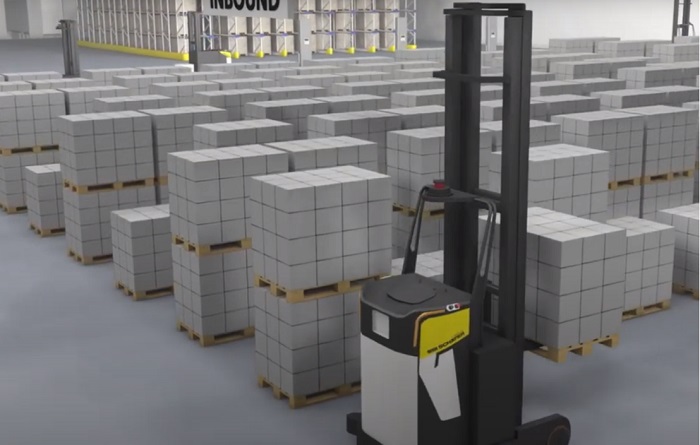
Suntech AGV
Suntech has researched and compared various AGVs with 50 years of technical precipitation and design experience, and finally developed and produced the following four practical AGVs that meet the needs of most users:
1. Forklift AGV
The AGV is a forklift-type structure with light weight and large load. It adopts the latest electronic control system, which makes the whole vehicle more controllable and reliable in the whole series of processes of design, production, operation and maintenance.
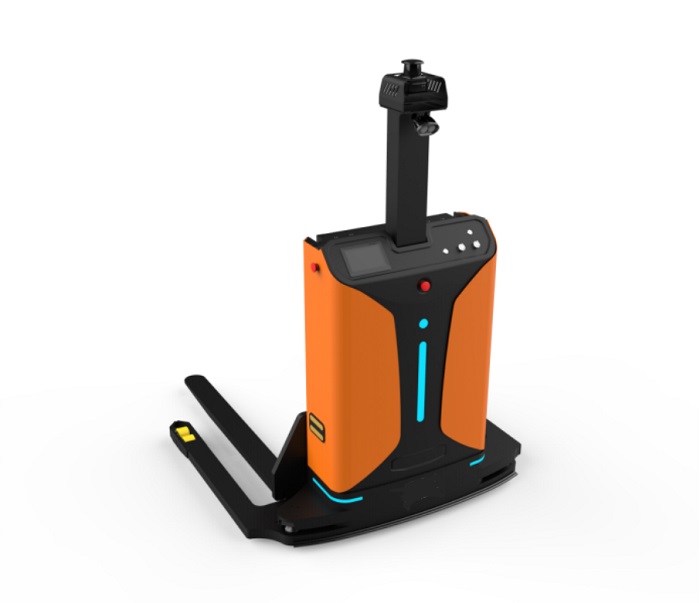
2. Drum AGV
The AGV is mainly used in automated logistics conveyor lines in an industrial environment to complete the handling of goods between stations and stations, and between stations and warehouses. It is an important part of the future Industry 4.0 smart factory and can replace manual logistics. The complicated, difficult, dangerous and repetitive tasks encountered in the system.
The AGV is composed of a two-wheel differential sports chassis and a cargo business module. It is equipped with the latest hardware platform and software system, and realizes cargo handling based on autonomous navigation technology and sports chassis technology.
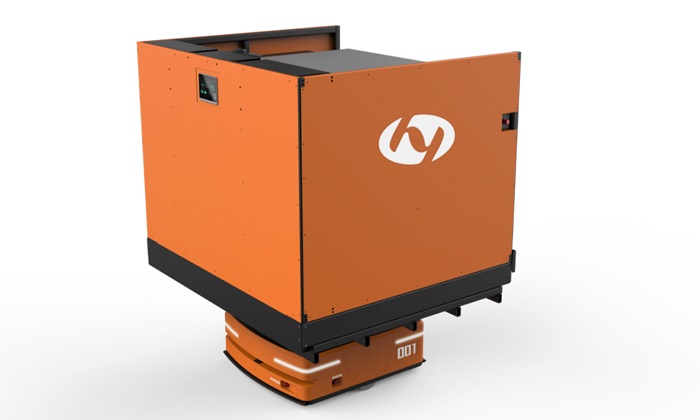
3. Two-way backpack AGV-1.5T
The AGV contains two parts: hardware and software. Main function: Realize the automatic docking and handling of materials in the automatic threading production line of the texturing workshop.
The AGV is a non-standard customized knapsack AGV. The automatic threading AGV part of the texturing workshop is composed of the AGV central management system and the non-standard customized unit loaded on the AGV. At the same time, the non-standard customized unit loaded on the AGV is composed of mechanical structure and electric The actuator, pneumatic actuator and other components.
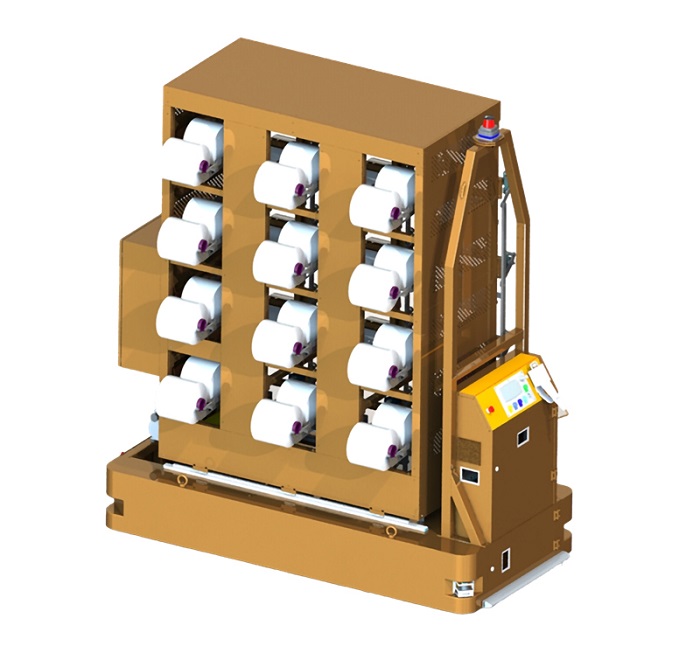
4. Two-way backpack AGV-3.5T
The AGV contains two parts: hardware and software. Main function: to realize the automatic docking and handling of materials on the automatic silk production line in the texturing workshop.
The AGV is a non-standard customized backpack AGV. The automatic threading AGV part of the texturing workshop is composed of the AGV central management system and the non-standard customized unit mounted on the AGV. At the same time, the non-standard customized unit mounted on the AGV is composed of mechanical structure and electric The actuator, pneumatic actuator and other components.
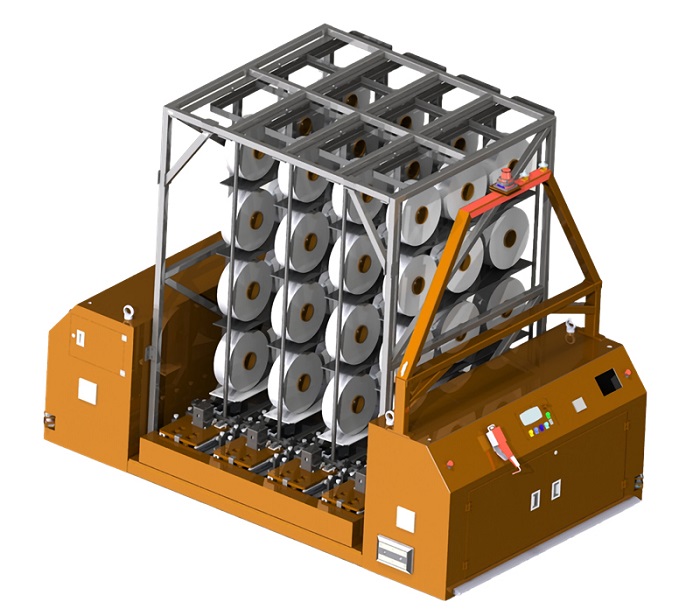
Equipment Components
Components that most AGVs have in common include: traction motors, traction batteries, a computer interface and payload interface. Traction motors assist in movement, while traction batteries provide the power. Usually, these are lithium ion phosphate batteries. The computer lets the main control processor contact the AGV and give it instructions. The payload interface is the material handling component. Examples include: conveyors, forks and loading decks.
How to Use It
To use AGVs, you just need to program it and send it on its way. If it is to be guided by mechanisms like wires or tape, you need to install those first. A simple system is capable of functioning independently with little or no intervention. A complex system with multiple AGVs in one warehouse may require the supervision of an operator to ensure that the units do not malfunction during production.
Benefits
AGVs offer many benefits, including: minimal human operation, fewer injuries, efficiency and a high return on investment.
It may need to be adjusted or corrected from time to time, but the operation is minimal. Unlike a worker who would become exhausted after a long shift or have to risk being injured in some work settings, an automatic guided vehicle system can operate continuously without being affected by harmful chemicals or heavy workloads.
The cost of fabricating and installing an automatic guided system varies greatly from one application to the next since specialized applications may require more programming and equipment. The upfront cost of engineering, manufacturing and programming a free-range system can be very high, but over time it will add efficiency and save on labor costs.
Because of the many benefits of using automatic guided vehicles in an industrial facility, many manufacturers often see a strong return on their initial investment, even when taking into account the high cost that they pay up front.
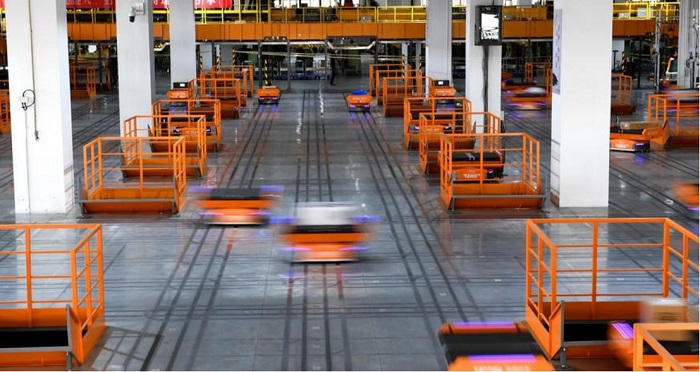
Design and Customization
When designing your custom AGV system, AGV manufacturers consider all of your application specifications, including: the type of loads to be moved, the sizes and shapes of loads to be moved, the motions required (lifting, loading, assembling, towing, etc.), the size of the facility, the layout of the facility and client budget.
Using these considerations, they pick out system details like: AGV type, guiding mechanism type and AGV programming. For example, during manufacturing, or even later on, manufacturers may program an AGV to perform maneuvers like spinning, moving laterally, raising and lowering and so on.
Safety and Compliance Standards
AGVs are beholden to a variety of different safety and compliance standards, primarily those put out by ANSI (American National Standards Institute). ANSI puts out a number of different standards that offer information like: guidelines for performance/durability/safety evaluations, recommendations for usage, information on regulatory requirements and the like. Examples of applicable standards include: ANSI ECMA 15-2010 (specs for cable-less controls of electric overhead traveling), ANSI ICWM-2012 (performance standards for castors and wheels), ANSI MH1-2016 (terminology, nomenclature and dimension/size recommendations related to pallet, slip sheets and other unit load bases), ANSI/ITSDF B56.5-2012 (safety standards for driverless AGVs and automated functions of manned industrial vehicles), ANSI MH10.8.1-2005 (specifications regarding minimum requirements for 2 dimension symbol and linear barcode labels) and ANSI MH10.8.12-2011 (format specifications for messages and data passed between material handling trading partners).
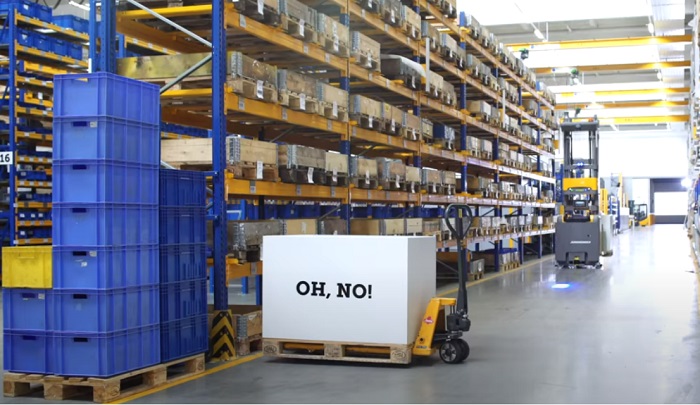
Things to Consider
When you’re preparing for an automated vehicle system purchase, you need to first consider a number of things. In fact, we recommend you put together a list of all your considerations, so that you will be prepared when it is time to talk shop with a potential manufacturer.
We recommend asking yourself the following questions:
1. How complex is the space your AGV must navigate? Is it simple and uncluttered enough for a fixed path system, or would you benefit more from a free-range system?
2. If you are considering a fixed path automated system, how much space do you have? Do you want an overhead system or a system using something like tape?
3. Does your AGV need to fit into tight spaces? If so, you may want a smaller vehicle.
4. How many automated vehicles do you want?
5. Does your application require just moving, or do you want something to help you assemble parts as well? This will influence the type of automated vehicle you purchase.
6. What is your budget? Having a small budget doesn’t mean that you can’t get as nice an AGV as you want; it just means your supplier will approach construction differently.
7. What is your timeline? Can the prospective supplier meet your deadline while maintaining quality?
8. Where do you need your AGV delivered? It is important you make sure that a manufacturer can actually deliver to you.
Once you’ve figured answered these questions, you can get down to the business of selecting your AGV manufacturer. To help you find the right one for you, we’ve put together a list of reputable and experienced AGV companies we trust. You’ll find them sandwiched, along with profiles, in between these information paragraphs. Take some time to browse those profiles. Frequently reference your specifications list to see if the services of an individual company match up with your needs. Pick out three or four to whom you’d like to speak, and then reach out to each of them with your questions and specifications. From among them, select the manufacturer that will best suit your needs. Good luck!
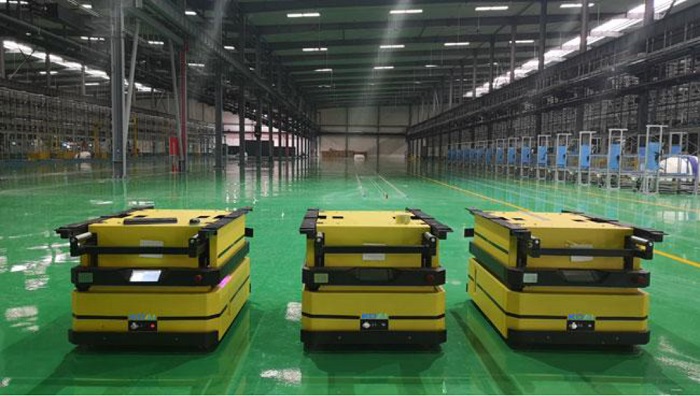
Suntech service
1.Discover the Possible Solutions
Our experienced Team will guide you through the process of discovering different solutions that will be best suited for YOUR Automation needs. Email us today to have our Team setup an appointment to visit your facility and discuss the possibilities. The Discovery phase can be the most exciting because we encourage you to DREAM.
2.Functional Spec and Design
After completing the Discovery phase, Suntech will quickly get to work to produce a Functional Specification. This specification will be the design guide for the solutions chosen in the prior phase. We will seek your input, and approval, on the specification and then begin to finalize the design. Many drawings will also be produce during this phase such as, electrical schematics, mechanical drawings, layout and installation drawings.
3.The Build
As parts begin to arrive at Suntech, our Team will begin to assemble, wire, and program your automation equipment. Once the equipment is ready, the Suntech Team will preform in-house testing (as complete as possible) and invite you to our facility for approval.
4.Install, Implement and Train
Upon approval, shipping will be arranged and installation at your facility will follow. Once installed, Suntech will implement the system logic, and perform on-site testing. Once the system is up and running, training will begin and Suntech will provide Classroom Style training and materials.
Suntech has developed and produced AGVs with 50 years of technical precipitation and design experience with light weight and heavy load. It adopts intelligent electronic control system, interactive interface and safety system to keep abreast of AGV operation dynamics, automatically avoid obstacles, safe and controllable, lithium battery Power supply, online automatic fast charging, laser guidance, support for manual driving or wireless control, suitable for various transportation scenarios, please inquire for details.
